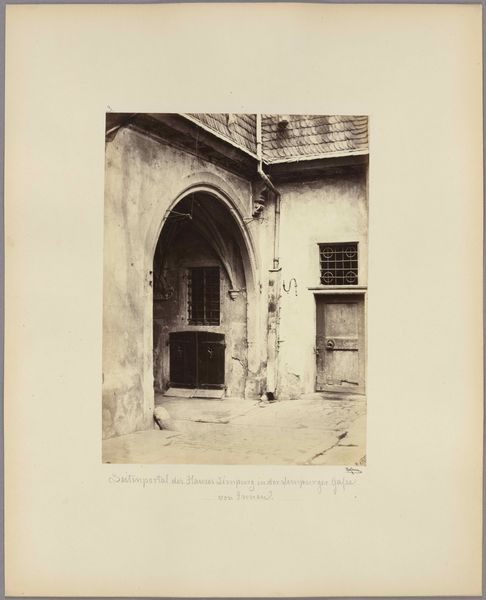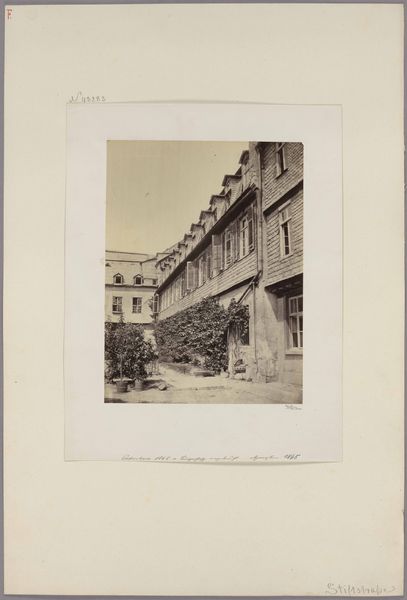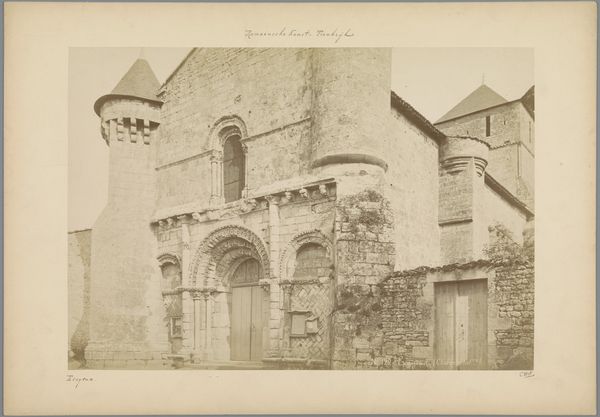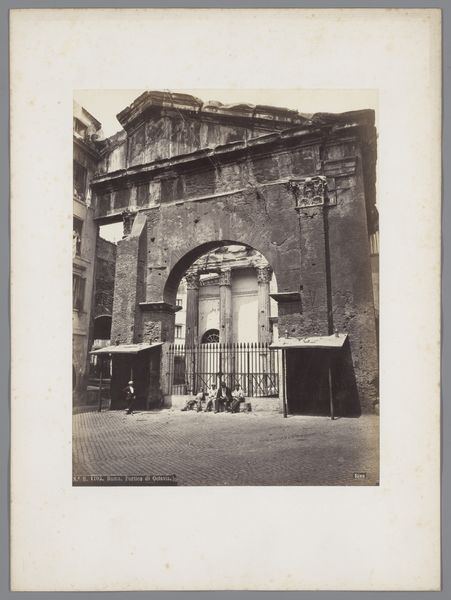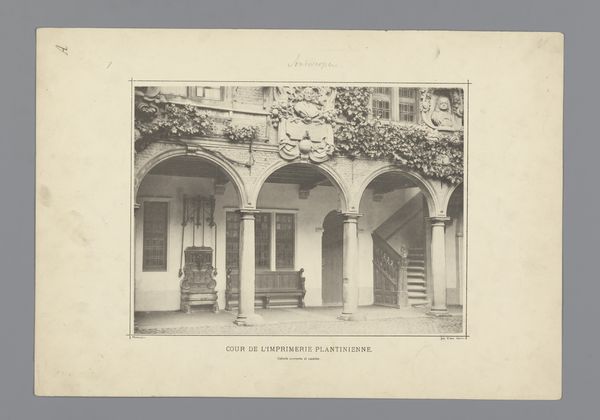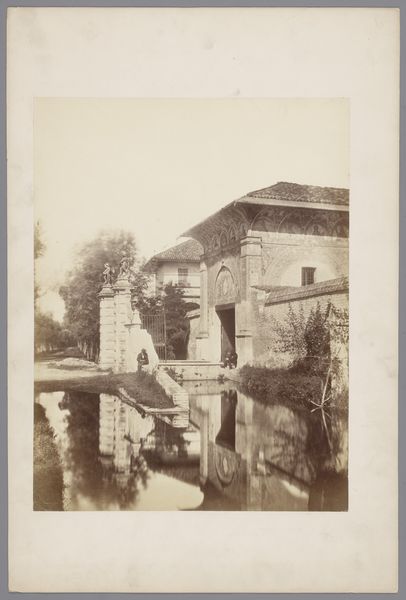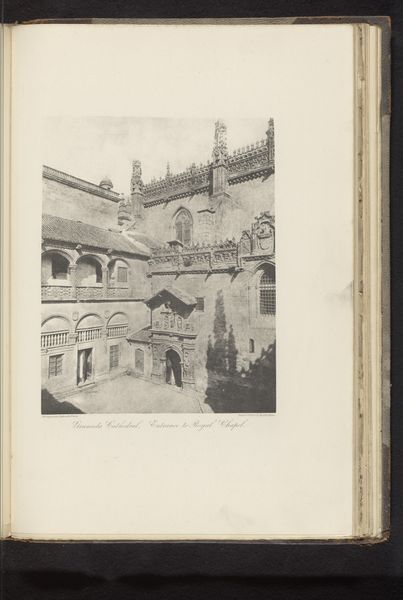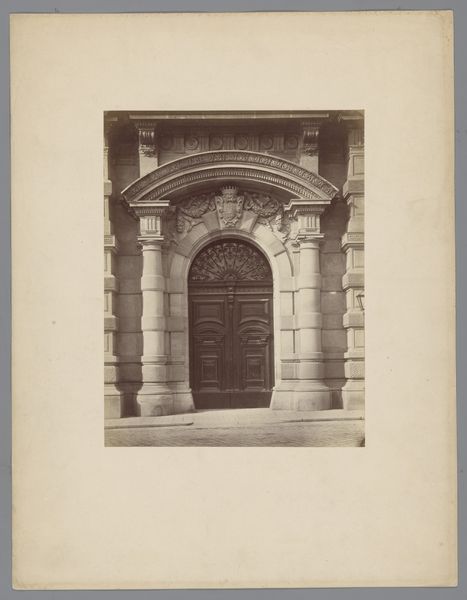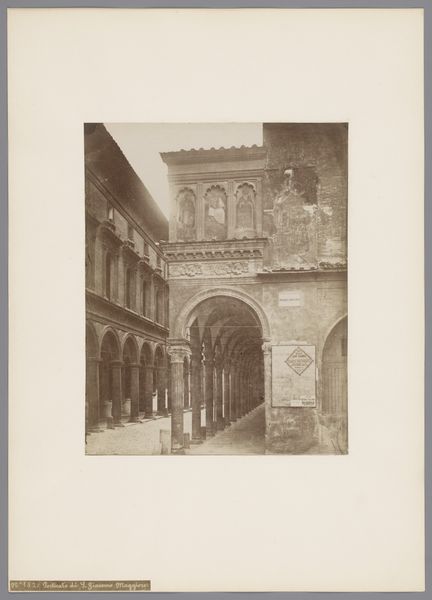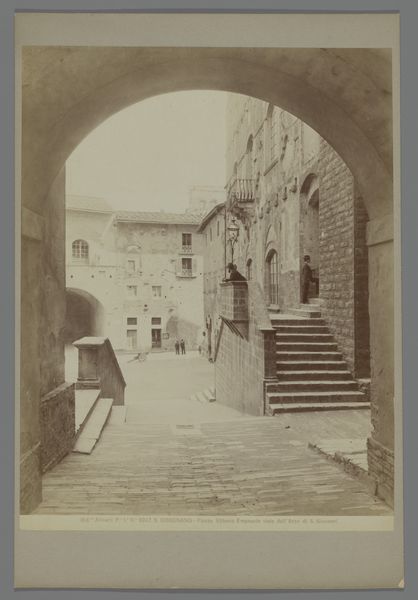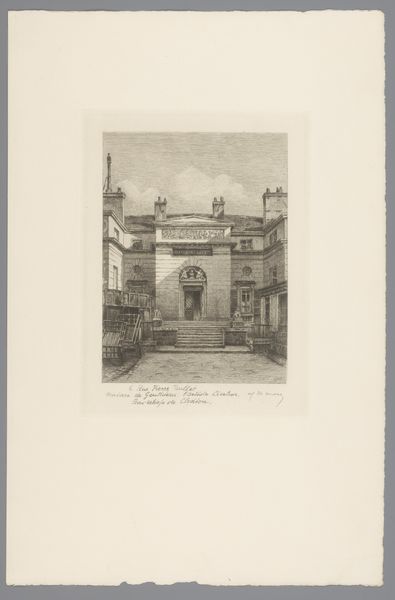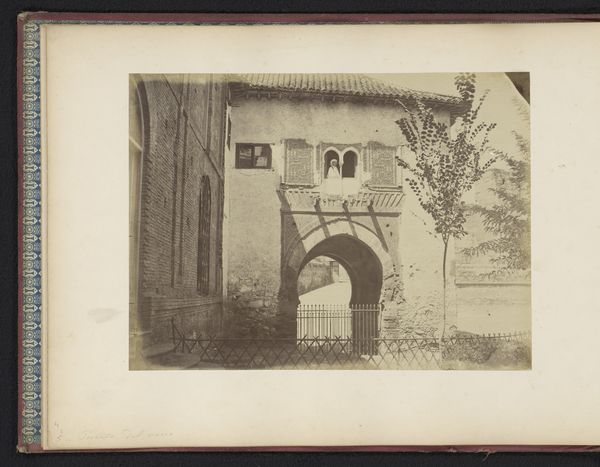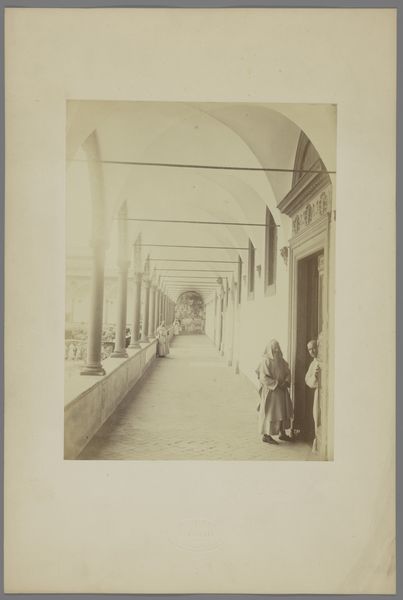
Frankfurt am Main_ Outdoor staircase, House Limpurg, no. 4 1864
0:00
0:00
Copyright: Public Domain
Curator: This is an albumen print photograph titled "Frankfurt am Main_ Outdoor staircase, House Limpurg, no. 4" taken in 1864 by Carl Friedrich Mylius. Editor: It's striking! The subdued palette really emphasizes the architectural details, particularly the spiraling staircase and that wonderful turret-like structure. It’s quite dramatic, even melancholic. Curator: Mylius’s work often explored the urban landscape, capturing a Germany undergoing rapid industrialization and societal change. Architectural photography served as a way of documenting and preserving cultural heritage amidst such change. Editor: Right. The way Mylius frames the staircase creates a strong sense of depth and draws the eye upward. It's about the composition, the interplay of light and shadow that gives it a nearly three-dimensional feel. The albumen print process lends it a lovely warmth, a tactile quality, almost. Curator: I would argue the location itself, the House Limpurg, and Mylius’s focus offers a visual commentary on class and power. The image becomes a statement about who has access to what spaces, literally and figuratively. Who were the residents of the house? What power dynamic is implied through this structure? Editor: But without knowing that specific history, the image stands as a composition that balances line, texture, and form. The architecture is an intriguing study in geometrical relationships, it creates a visual hierarchy that exists beyond immediate historical contexts. It hints at an Escher-like infinity... Curator: But dismissing the societal dimensions minimizes our interpretation. The very act of preserving it on paper can become a social action. We’re not simply appreciating the line and form, we’re reminded of the social fabric that this structure reflects. Editor: A valid point. And even viewing the staircase as an aesthetic experience offers, perhaps unconsciously, access to that bygone era. Curator: Precisely! The image, frozen in time, embodies social narratives as well as aesthetic form. Editor: Indeed. It shows just how interconnected visual forms and historical realities can be. It's not just about the staircase; it is also the world surrounding it.
Comments
No comments
Be the first to comment and join the conversation on the ultimate creative platform.
